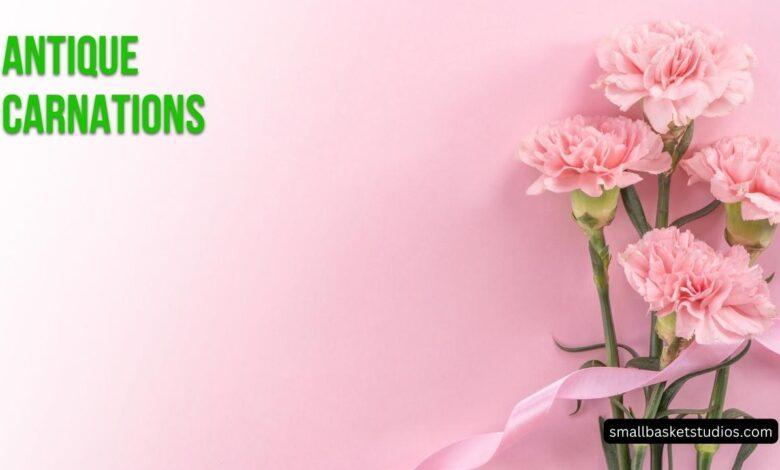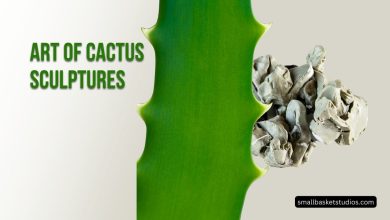Antique Carnations: Unveiling the Timeless Beauty

Antique carnations (commonly referred to as clove pink” or “old-fashioned carnation”) have long held a special place in gardeners and flower enthusiasts hearts, known for their rich history, captivating fragrance and intricate blooms that distinguishe them from their modern counterparts.
In this comprehensive guide to antique carnations, we will delve into their rich history, varieties, cultivation methods and symbolism. No matter if you are an seasoned gardener or someone just starting to get interested in gardening – this article should equip you with all of the knowledge required to appreciate and nurture antique carnations in your garden.
History of Carnations
Carnations (Dianthus caryophyllus) have an extraordinary, over 2,000 year-long history that dates back to ancient Egypt and Greece. Thought to originate in Mediterranean regions, carnations’ name comes from two Latin words, carnis meaning flesh and os meaning bone — possibly alluding to their pinkish hue or use in ancient medicinal and culinary applications.
Carnations have long been revered for both their beauty and symbolic meaning throughout history. Ancient Rome used carnations in garlands and wreaths for celebrations and festivals; during medieval monastic cultivation for medicinal properties; they later gained widespread use as decorative flowers during Renaissance English gardens.
Antique carnations became widely cultivated across Europe between 17th and 18th century, popular among gardeners due to their captivating clove-like scent and unique, ruffled petals. Although out-of-favor in 19th century due to more advanced varieties emerging, antique carnations has experienced a comeback thanks to gardeners and enthusiasts who recognize its timeless allure.
Types of Antique Carnations
Antique carnations come in various forms, each with its own characteristics and charm. Here are some of the main types:
Standard Carnations
Standard antique carnations are characterized by their single, large blooms. They typically have a sweet and spicy fragrance reminiscent of cloves, hence the name “clove pink.” The petals are often fringed and come in a range of colors, including shades of pink, red, white, and lavender. These carnations make excellent cut flowers and are a delightful addition to bouquets and arrangements.
Spray Carnations
Spray antique carnations, also known as “bouquet carnations,” produce multiple smaller blooms on a single stem. These compact and prolific flowers are perfect for creating eye-catching floral displays. They share the same captivating fragrance as standard carnations and are available in a variety of colors, making them a versatile choice for both garden beds and floral arrangements.
Dwarf Carnations
Dwarf antique carnations are smaller in stature compared to standard and spray varieties. They are well-suited for border plantings, rock gardens, or containers. Despite their diminutive size, they retain the same enchanting fragrance and lovely ruffled petals. Dwarf carnations are an excellent choice for those with limited garden space.
Cultivating Antique Carnations
Cultivating antique carnations requires some care and attention, but the results are undoubtedly worth it. Here’s a step-by-step guide to growing these charming flowers in your garden:
Soil Preparation
Antique carnations thrive in well-drained soil that is moderately rich in organic matter. Prepare the soil by loosening it to a depth of 12 to 15 inches and incorporating compost or well-rotted manure to improve fertility. Ensure the soil’s pH level is slightly alkaline, ideally between 6.5 and 7.0.
Planting
Plant antique carnations in early spring or late summer to early autumn. Choose a sunny location in your garden with at least 6 to 8 hours of direct sunlight. Space the plants 12 to 18 inches apart, depending on the variety, to allow for good air circulation.
When planting, dig a hole slightly larger than the root ball, and place the plant at the same depth as it was in the nursery container. Water thoroughly after planting to help the roots establish themselves.
Watering and Feeding
Antique carnations prefer consistent moisture, so water them regularly, especially during dry spells. However, be cautious not to overwater, as they are susceptible to root rot. To maintain soil moisture and suppress weeds, mulch around the base of the plants.
Feed your antique carnations with a balanced, slow-release fertilizer in early spring and again in late summer. Follow the manufacturer’s instructions for application rates.
Pruning
Pruning is essential to encourage bushier growth and prolific flowering. Pinch back the tips of the stems by about one-third in early summer to promote branching. Deadhead spent blooms regularly to prolong the flowering season and prevent self-seeding.
Pests and Diseases
Antique carnations are generally hardy, but they can be susceptible to common garden pests such as aphids, spider mites, and thrips. Monitor your plants regularly for signs of infestation and treat them promptly with insecticidal soap or neem oil if necessary.
Common diseases that may affect carnations include powdery mildew and rust. Ensure good air circulation around the plants, avoid overhead watering, and choose disease-resistant varieties to mitigate these issues.
Preserving Antique Carnations
Preserving the beauty and fragrance of antique carnations allows you to enjoy them long after their blooming season has passed. Here are three popular methods for preserving these timeless flowers:
Drying
Drying antique carnations is a simple and effective way to retain their charm. To dry them, gather a small bouquet of carnations and tie the stems together with a rubber band or string. Hang them upside down in a cool, dry, and dark location for about two to three weeks. Once dried, you can use them in floral arrangements, wreaths, or potpourri.
Pressing
Pressed antique carnations can be used to create decorative art, greeting cards, or framed compositions. To press carnations, place them between sheets of blotting paper or newspaper within the pages of a heavy book. Apply pressure by stacking more books or placing weights on top. Allow the flowers to remain pressed for several weeks until they are completely dry and flat.
Potpourri
Antique carnations’ delightful clove-like scent makes them a perfect choice for homemade potpourri. Combine dried carnation petals with other fragrant herbs and flowers such as lavender, rose petals, and cinnamon sticks. Store the potpourri in a decorative container or sachets to enjoy their aromatic charm throughout the year.
The Symbolism of Antique Carnations
Like many flowers, antique carnations carry symbolism and meaning. Traditionally, carnations symbolize love and affection, making them a popular choice for bouquets and gifts. However, different colors of carnations convey distinct messages:
Red Carnations: Love and admiration.
White Carnations: Purity and luck.
Pink Carnations: Gratitude and admiration.
Yellow Carnations: Disappointment or rejection.
Antique carnations, with their rich history and unique fragrance, add an element of nostalgia and timelessness to their symbolism. They can symbolize enduring love, cherished memories, or a connection to the past.
FAQs
Can antique carnations be grown in containers?
Yes, dwarf antique carnations are well-suited for container gardening. Choose a large container with good drainage, use quality potting soil, and ensure they receive adequate sunlight.
How do I propagate antique carnations?
You can propagate antique carnations by taking stem cuttings in late spring or early summer. Dip the cut ends in rooting hormone and plant them in a well-draining potting mix until they develop roots.
Are antique carnations fragrant?
Yes, antique carnations are known for their delightful clove-like fragrance, which is more pronounced in some varieties than others.
Can I grow antique carnations from seeds?
While it’s possible to grow antique carnations from seeds, it’s more common to propagate them from cuttings or purchase established plants for quicker results.
How can I protect my antique carnations from pests and diseases?
Regularly inspect your plants for signs of pests or diseases, maintain good air circulation, and choose disease-resistant varieties. If needed, treat with appropriate organic or chemical controls.


